The First 24 Hours: A Real-Time Lesson of Endurance for IMSA’s GTP Class
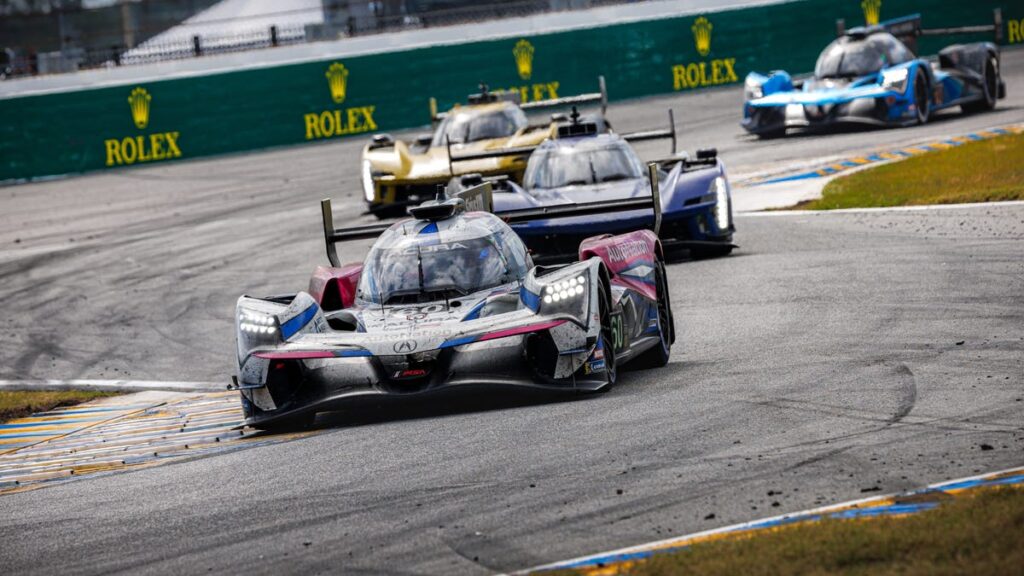
Endurance racing has been around for over a century. The first organized 24-hour race on record took place in Columbus, Ohio, in 1905. Fast forward to this year, the most famous 24-hour race in the world, the 24 Hours of Le Mans, celebrates 100 years. The race has historically set the stage for a place to truly test cars. If a manufacturer could last a full 24 hours running at breakneck speeds across the French countryside, of course it could handle whatever your daily commute throws at you.
That has never been lost on automakers, as endurance racing remains a hotbed of manufacturers testing new technologies. Not every race series attempts a 24-hour test — can you imagine anyone driving a Formula 1 car for 24 straight hours? — but each has its place for testing. Just a couple of years ago, the International Motor Sports Association (IMSA), World Endurance Championship (WEC) and the Automobile Club de l’Ouest (ACO), wanted to join the North American and European racing efforts at Le Mans, while also considering the future of cars and racing as a whole as the world quickly pivots to electrified vehicles.
Their new hybrid racers — called Le Mans Daytona Hypercars or Grand Touring Prototypes depending on the series — would open the playing field across the Atlantic to bring manufacturers together for the next thing in racing. In less than two years, each brand built their cars, jumped the hurdles, and prepared for their first race, the 2023 Rolex 24 at Daytona. Speaking with the 2023 IMSA GTP class manufacturers, Acura, BMW, Cadillac and Porsche, before and after the first race, one thing became clear: All the testing in the world can’t ever truly prepare you for what can happen in 24 hours.
The No. 10 Wayne Taylor Racing Acura at dusk Saturday of the Rolex 24 at Daytona.Photo: Rolex / Eric Larson
Full Disclosure: Porsche flew me and several other journalists down to Daytona for the final closed testing session December 6-7, 2022, to talk to just about everyone before the 2023 race season officially kicked off. In January, I was invited to join Cadillac for the Rolex 24 Hour at Daytona weekend, where myself and other journalists could comfortably watch the race from the Bill France Suite. I followed up with every manufacturer after the race, via video chat or email, to get a complete the picture of the first race of this new series.
The Month Before the 24
Porsche Penske Motorsports went into IMSA’s sanctioned December test as the strongest manufacturer running in the GTP class. Porsche volunteered to be the “pilot program” car for the series’ new prototypes, meaning the team would be the first manufacturer to integrate the series’ shared hybrid system with their internal combustion engine. For Porsche, that was a twin-turbocharged 3.4-liter V8. Per their agreement with IMSA and the ACO, Porsche would share data concerning the hybrid system with the other participating manufacturers as well as the system’s manufacturers, Bosch, Williams and Xtrac.
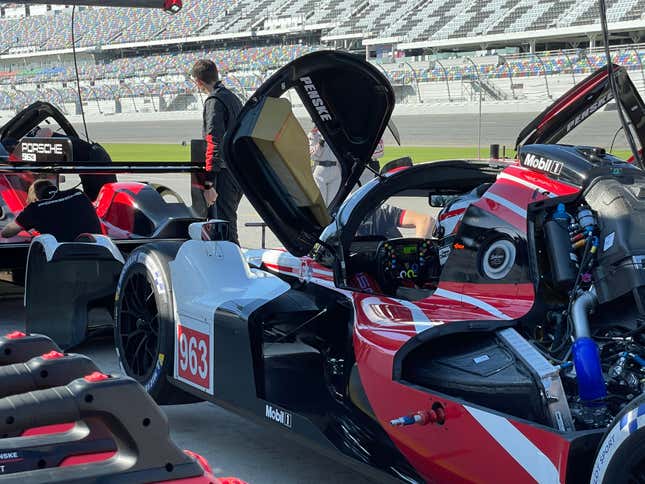
Photo: Lalita Chemello / Jalopnik
Porsche Penske Motorsport already had tires on the track in February of last year, while Cadillac’s car first debuted in June. BMW would announce liveries and cars that same month. Acura would be last to unveil its near-completed car in mid-August. The first IMSA-sanctioned test for GTP was in early October, at Road Atlanta, following its Petit Le Mans race weekend. Porsche, with months of testing under its belt, sat that one out, while Cadillac, BMW and Acura took advantage of the track time.
The next test, the first week of December, would be the first time all four manufacturers were on track together before IMSA’s Roar Before the 24 weekend in mid-January 2023. The Roar would include practice sessions before qualifying for the Rolex 24 at Daytona, just two weeks later.
Despite months of testing, Porsche Penske Motorsport Managing Director Jonathan Diuguid expressed in an email interview after the Rolex that the team’s continued work-in-progress was to understand the hybrid system and the challenges it could pose going into January.
“All teams, including ours, have encountered issues over the last 12 months while testing,” Diuguid wrote. “…It will only continue to get better as we learn from every problem and failure that we have, even those that occur during the race.”
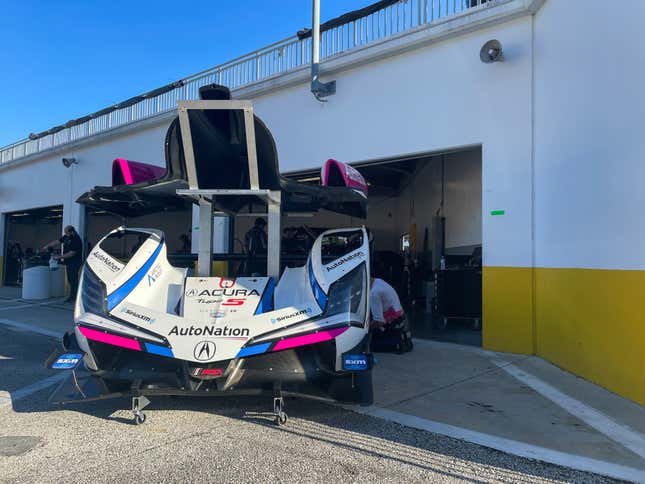
The No. 60 Meyer Shank Racing Acura in the garage during IMSA’s December test at Daytona International Speedway.Photo: Lalita Chemello / Jalopnik
Acura was understandably behind the other competing manufacturers going into testing. Kelvin Fu, vice president for Honda Performance Development, said that following the Rolex 24-hour race, Acura’s two teams, the (later controversial) winners Meyer Shank Racing (MSR) and Wayne Taylor Racing with Andretti Motorsport, had only managed to do four-to-five-hour runs of testing. Compare this to the other teams, many of which had managed at least a 24-hour test prior to the December testing week. Testing was already off to a rough start when one of the cars had a critical failure just nine laps in.
The two Acura-branded teams spent most of the two-day testing period sorting out drivers’ complaints of drivability issues.
“We had to make some changes to the car, how the car performs, to protect some of the equipment, and they really didn’t like it,” Fu said. “We were also discovering our engine wasn’t performing the way we wanted.” Most anyone in the paddock that week could hear exactly what Fu was talking about, the unhealthy-sounding 2.4-liter V6 Acura engines (the only V6s in the class) audibly struggling as they exited pit lane, not as awe-inspiring as the teams were hoping for. At least the Wayne Taylor Acura, in its iconic Minolta livery, was on track and turning laps throughout the two-day session.
Fu said that at the end of testing, he was hoping the cars would at least finish the race, something every manufacturer and team participating in the new GTP series was naturally hoping for. Even finishing on the lead lap would be a win.
If there were any worries in the Cadillac paddock, no one could hear them. The team teased its “Roar”-ready engine following testing at Road Atlanta just weeks before. Hearing that guttural 5.5-liter V8 growl in person was absolutely exhilarating. Where were the Cadillac Racing cars on the track? Follow your ears.
GM Sports Car Racing Manager Laura Wontrop Klauser was also enjoying the beefy sounds of the Cadillac’s V8 echoing across Daytona International Speedway. Cadillac went into testing having already tested in 24-hour race conditions at Sebring International Raceway, so reliability wasn’t exactly a concern. However, the team’s (and the class’s) inability to get their hands on spare parts greatly influenced the two days of testing.
“We needed to run a car and find out what was wrong, but not going so far that we broke everything. We didn’t have enough parts to keep running,” Klauser said. “In a perfect world, you’ve got multiple spares you come with in these tests and your intent is to break things… to find the weakest link and learn from it. We weren’t able to push hard enough to do that.”
Every team and manufacturer was facing similar issues, enough that come January teams would have people hand-carrying parts onto flights for the Roar and for race weekends.
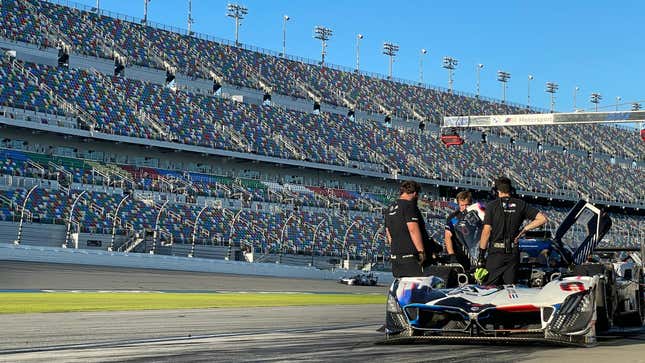
The BMW M RLL crew looking over one of its two hypercars during December’s tests.Photo: Lalita Chemello / Jalopnik
Neighboring the Cadillac paddocks was BMW, whose teams were playing with car setup. BMW Project Leader Maurizio Leschiutta told Jalopnik over a video chat in January that the BMW M Sport Rahal Letterman Lanigan (RLL) team was still exploring the potential of the car.
“We didn’t do nearly as much testing as we would have liked for a number of reasons,” Leschiutta said. “[We] basically did set-up work to get to know the car better.”
BMW may have had a car together and could begin testing a little before Acura, but in terms of hybrid prototype racing background, it was the greenest in the paddock. Leschiutta explained, “…our competitors have had more experience with prototypes, because they’ve been racing in DPI for years. We were learning, and on top of that, we’ve introduced this aspect which is a hybrid powertrain [that] brings with it another level of complication, because you’re integrating a new machine into the car itself, learning how to do the energy management and also learning what potentials it gives you in terms of the performance envelope.”
The team may have gotten its hands on how the car could perform, but coming out of testing, BMW’s biggest worry was reliability. RLL has yet to complete a 24-hour race distance.
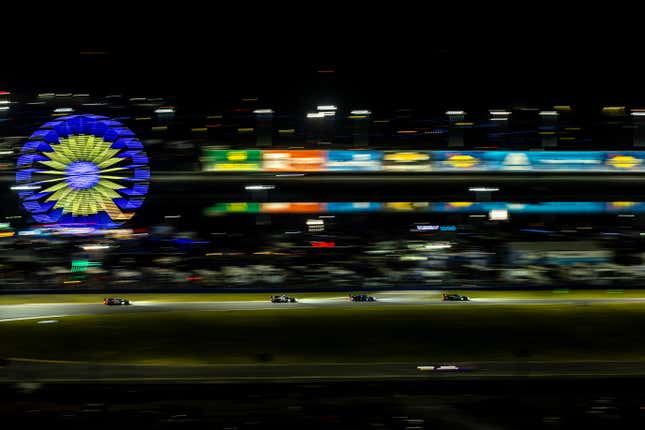
Photo: Rolex / Eric Larson
Rolling Through the Rolex 24 at Daytona Race Weekend
Almost everyone involved with the Grand Touring Prototype series was on edge when the No. 25 BMW M Sport RLL car came to what appeared to be a random stop on track during the first of the 24 hours. Cadillac’s Klauser said, “I was hoping we were going to get much further through the race before that started happening. So I think all of us across the OE field were like, ‘What’s going to happen here?’”
“It caught us out, unfortunately, with the No. 25 car, which suffered what we call an isolation failure,” Leschiutta said. “The car went into a red light condition in the first part of the race, which forced it into [a] high voltage safety area. Then we intervened on the car in the hybrid system.” BMW M RLL was able to get their No. 25 car back out on track in a reasonable turnaround time of 30 laps. But another issue would bring the car in less than ten laps later, and mechanical issues would cost the car 109 laps total. It finished, running ninth in the GTP class.
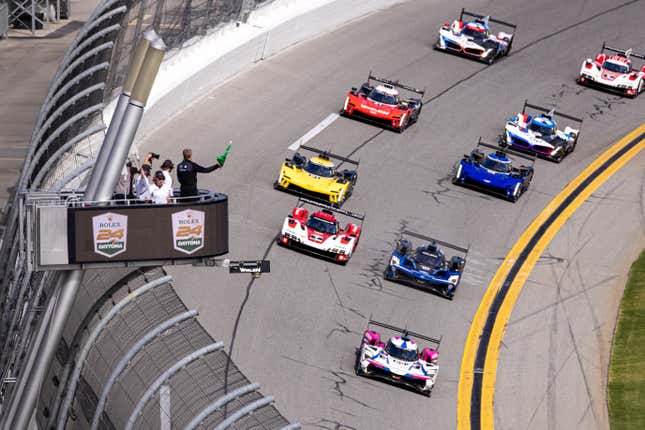
Photo: Rolex / Eric Larson
BMW wasn’t the only manufacturer forced to overcome major malfunctions with the hybrid system. Porsche Penske Motorsports would have to do a full battery swap on the No. 7 car in less than 30 minutes on Saturday night. On Sunday morning, the No. 6 car suffered from gearbox and powertrain issues that were serious enough to retire the car from the race entirely.
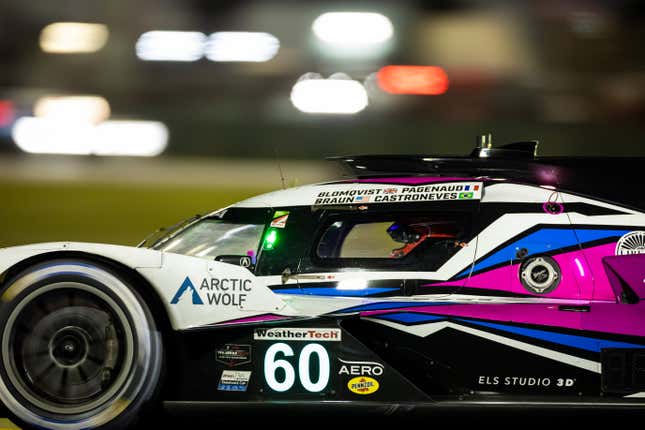
Photo: Rolex / Eric Larson
Gearbox issues also plagued the Acura Meyer Shank Racing garage. A leaky gearbox posed the team the challenging question of how to fill a gearbox with oil during the race. MSR’s No. 60 car was also facing issues regarding keeping the proper oil level in the engine, forcing the car to pit more frequently than any other cars in the class to simply change the oil. Acura had already figured out how to approach this specific setback when they tested the engine on dynos through Christmas; an oil light would be the biggest issue the Acura No. 10 Wayne Taylor Racing car faced. Fu says they had to take the car to the garage to fix it, but the team would face a relatively mundane and happily uneventful race.
Cadillac Racing’s cars remained relatively unfazed throughout the race. Klauser said that they did need to perform a power cycle on one of the cars; in layman’s office tech terms, they had to turn the car off and turn it back on again.
“Thankfully, it didn’t impact our ability to stay on the lead lap or anything along those lines,” Klauser said. “Electronics are hard. This car is more connected than any race car we’ve worked on. So you know, there’s always opportunities [for] electric gremlins. I think I’m gonna figure out how to build a cage for them because I could make millions… because you know, everyone deals with them.”
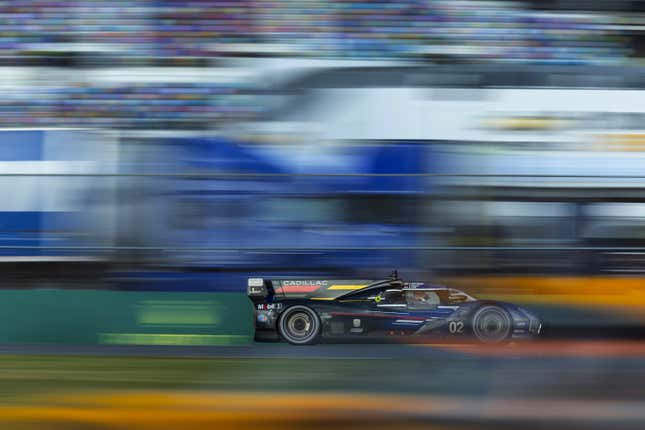
The No. 2 Cadillac Racing Car during the Rolex 24 at Daytona.Photo: Cadillac
The Aftermath
Every team and manufacturer simply wanted to finish the race running. Of the nine LMDh GTP cars that took to the grid on that sunny Florida afternoon on January 28, eight managed to finish the race, while running, the next day. The only car that didn’t see that finish line was the No. 6 of Porsche Penske Motorsports. Upon retirement, it would complete 48 laps more than the No. 25 BMW M Team RLL car to claim 8th in the class. For a newly launched series, where most of the cars were developed, built and tested in less than two years, that’s an incredible feat.
“We’re looking at the cars having come off the track after 24 hours, and they were solid. Some of the best looking post-24-hour race cars I’ve ever seen, which was great,” Klauser of Cadillac Racing said. “Don’t take my word for it, because I have limited experience compared to some of our team members who have been doing this for 20 plus years… they’ve seen many more Rolexes than I have. But I think from that standpoint, that’s great.”
Klauser admits that the three Cadillac cars weren’t perfect, but notes they didn’t face massive failures like the other teams had to tackle. The biggest miss was a racing incident with the No. 31 car of Action Express Racing in the first eight hours of the race.
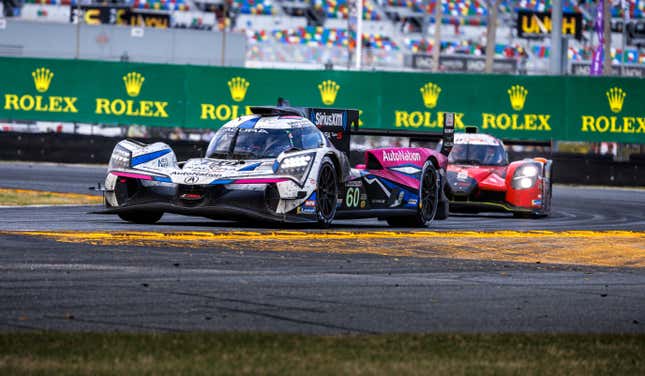
The No. 60 Meyer Shank Racing Acura hypercar on track at Daytona International Speedway.Photo: Rolex / Stephan Cooper
Finishing ahead of Cadillac was, shockingly, Acura. Fu was still speechless two weeks after the race, concerning MSR’s race win and the No. 10 Wayne Taylor car following up for a second-place overall and class finish. The team, wholly the underdog in terms of testing hours and figuring out all of the issues it had faced pre-race, was rightfully surprised.
“I don’t know how we did it,” Fu said. “We were stunned after we qualified on pole. We’re like, ‘This is as good as it gets,’ waiting for the other shoe to drop.”
At the time of our interview, there was no indication from Acura about MSR’s tire pressure controversy. Weeks later, according to IMSA, a thorough investigation found that the No. 6 Meyer Shank Racing Acura had manipulated tire data to indicate the tires were running at the appropriate race-sanctioned pressures during the race, when in fact the tire pressures the team ran were lower. In reaction to the breach, IMSA announced on March 8 that MSR would be stripped of 200 points, team owner Mike Shank would be put on probation for the remainder of the 2023 season, and the engineer involved was let go from the team and series. MSR was also fined $50,000 and had to forfeit the team’s financial prize winnings. However, the overall win and Rolex watches remained with the winners.
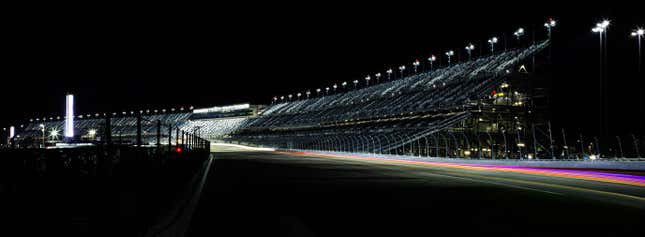
Under the lights at Daytona International Speedway.Photo: Rolex / Stephan Cooper
Looking Ahead to Sebring
Following the MSR violation, a small dark cloud hangs over the coming race weekend at Sebring, though teams are hyper-focused on the next challenge: twelve hours on the rough-riding track.
“Ah yes, the shaker test,” BMW’s Leschiutta said. “The 24 hours was a psychological hurdle. Sebring is not going to be easy.” With a couple of days of testing at the raceway in February, and 12 additional hours of fender-to-fender competition on a technically challenging track, manufacturers are hopeful they can better pinpoint and understand even more failure points on the car.
The WEC series will also be joining IMSA to kick off its first race of the season at the upcoming Super Sebring race weekend. The 1000 Miles of Sebring will be the first time the WEC’s hypercars will be on track, introducing entries from Ferrari, Peugeot, Toyota, Glickenhaus and Vanwall, along with familiar faces from Cadillac and Porsche.
“This will allow us to see the [Balance of Performance] between the two categories. The hypercars have a different technical regulation than the [IMSA] LMDh cars,” Leschiutta said. “The concern is that these two different cars need to compete in the same class in the WEC or GTP, and that they need to be reasonably balanced in terms of performance so the competition is fair.”
For Cadillac, Klauser will be exceptionally busy this weekend keeping up with the Caddies in both the IMSA and WEC paddocks as well as the Corvette Racing cars in both series. But coming off the 24, she has confidence in her multiple cars and teams.
“I would say that Sebring does always put the car to the test hands down, and there’s an intensity that comes from racing a car versus just running a test,” Klauser said. “Even if you’re trying your hardest to match it, it’s never the same as if you’re actually racing… I have a feeling we’ll continue to learn about this car several years into the program. [There’s] always something new to learn, which is what makes it exciting.”
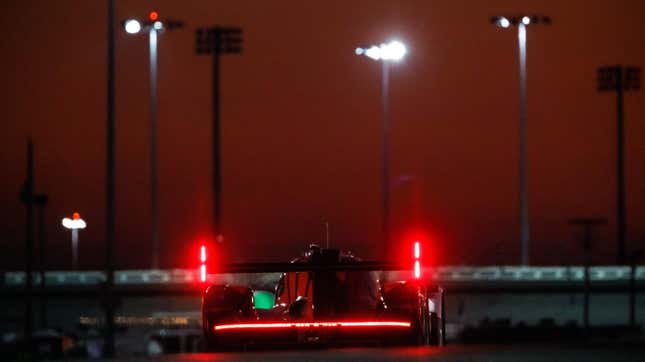
Photo: Rolex / Stephan Cooper



